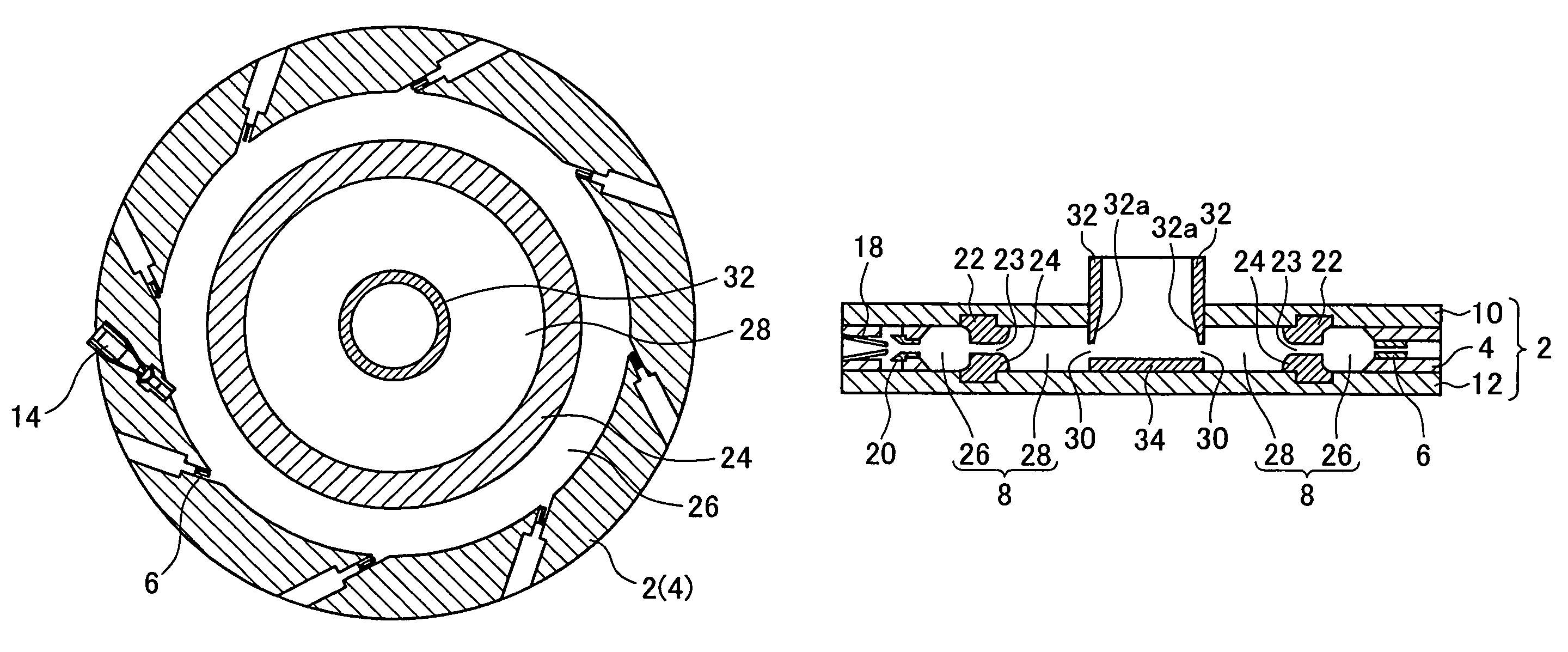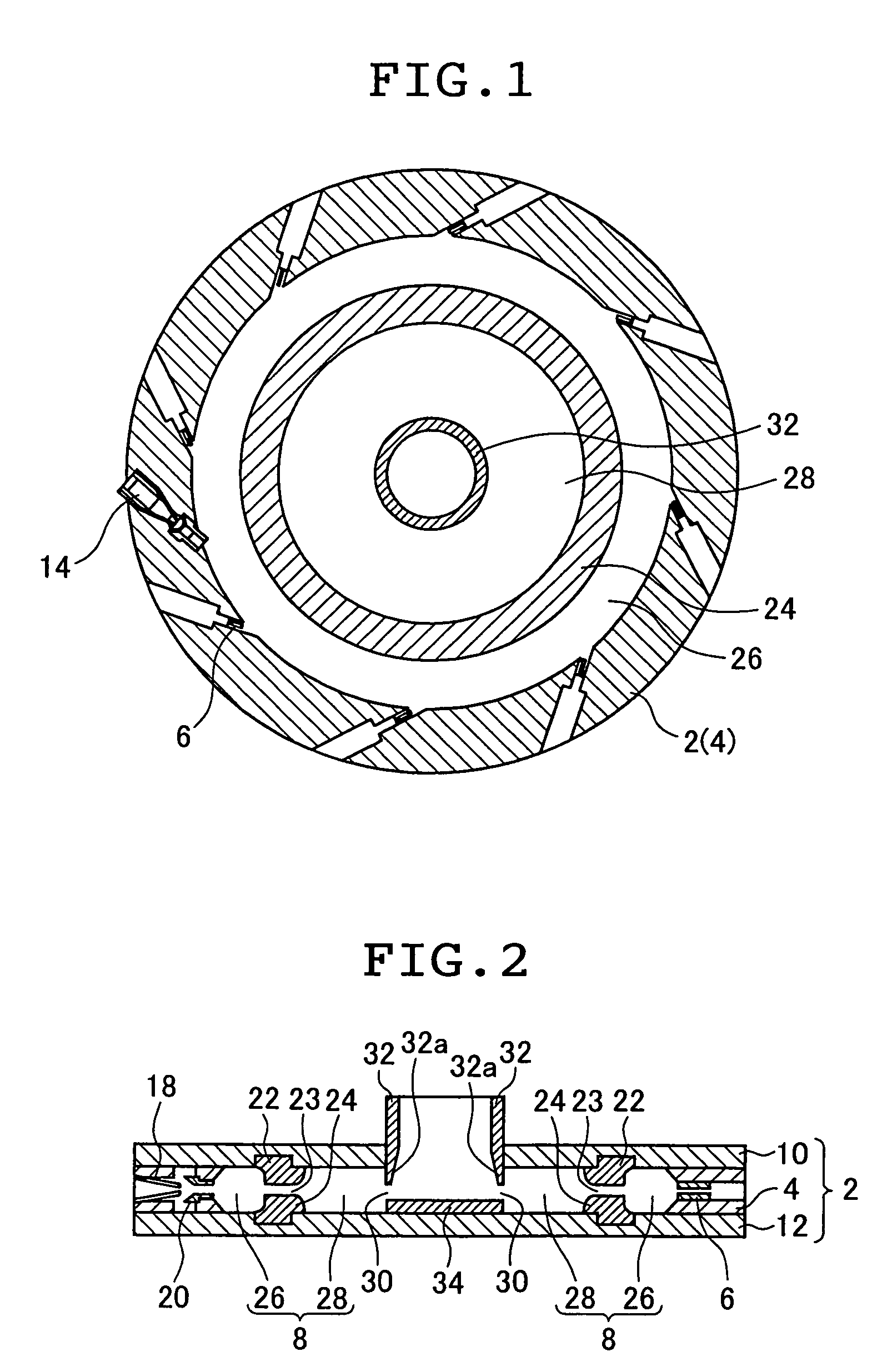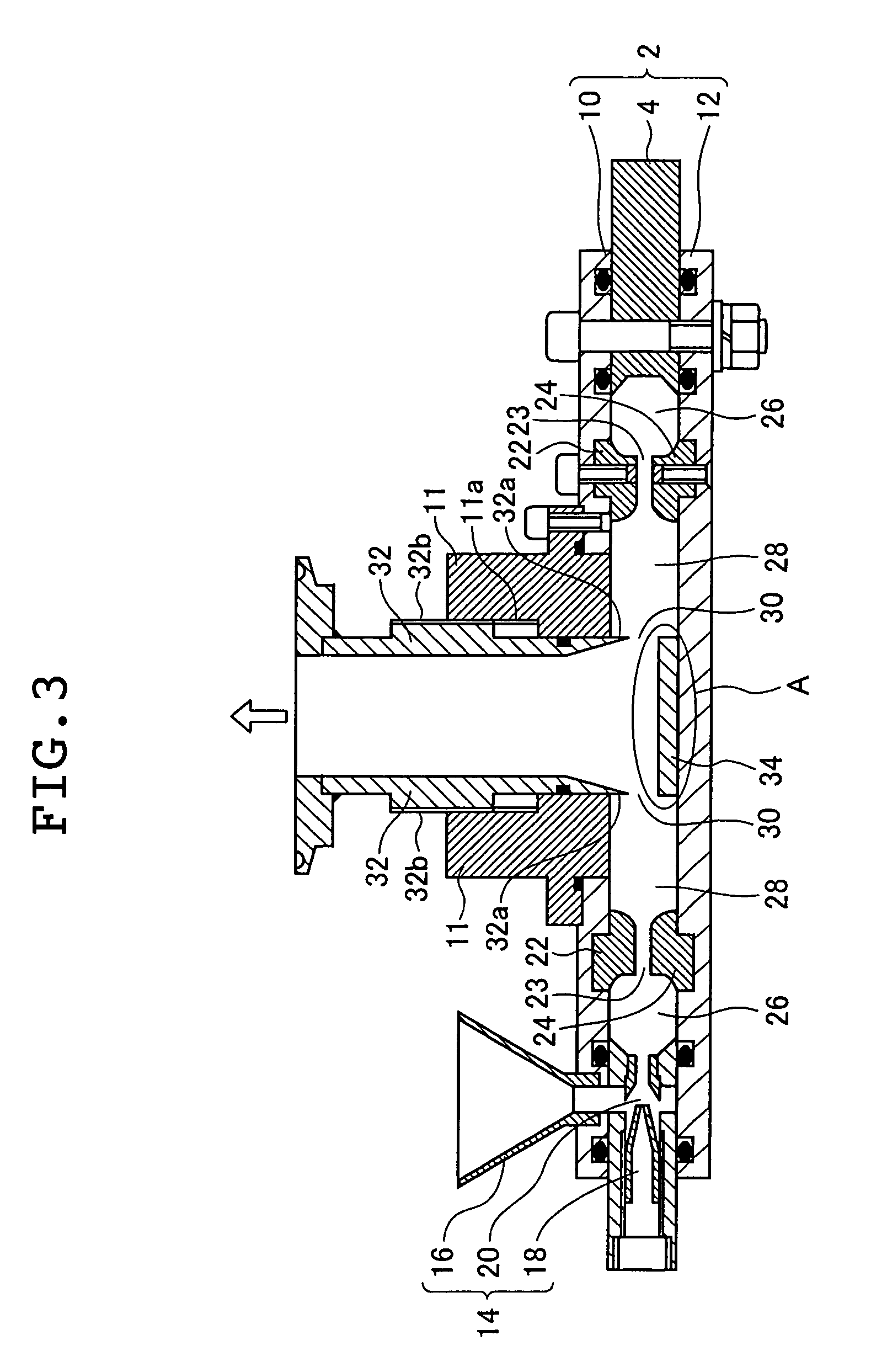Jet mill
a jet mill and milling machine technology, applied in the field of jet mills, can solve the problems of difficult to grind the material to a specified particle size or control the particle size distribution to a narrow enough range, poor classification precision, swirling, etc., and achieves the effect of easy separation and reassembling, simple configuration, and easy cleaning
- Summary
- Abstract
- Description
- Claims
- Application Information
AI Technical Summary
Benefits of technology
Problems solved by technology
Method used
Image
Examples
example 1
[0055]Polyester-based nonmagnetic color toner particles with an average size of 500 μm was ground with the jet mill shown in FIGS. 1 to 3, and the effectiveness of a classification ring channel 23 formed by classification rings 22 and 24 as annular barriers in the process of grinding was evaluated. Compressed air was supplied through the air nozzles 6 at a pressure of 0.6 MPa and the feed was supplied at a rate of 800 g / hr. The fine particles obtained by the grinding process had an average particle size of 6.4 μm, with the volume fraction of particles finer than 3 μm being 3.9% and that of particles coarser than 10 μm being 1.8% in the presence of the classification ring channel 23. At this time, the mill body 2 had a diameter of 285 mm; the gap spacing between the top plate 10 and the bottom plate 12, that is, the height of the grinding chamber 8, was 20 mm; and the distance between the classification rings 22 and 24 (the opening width of the classification ring channel 23) was 4 m...
example 2
[0058]As in Example 1, polyester-base nonmagnetic color toner particles having an average size of 500 μm were fed as the material to be ground and the grinding process was performed with the distance between the classification rings 22 and 24 (the opening width of the classification ring channel 23) being varied. The average size of the fine particles obtained by the grinding process was measured. Compressed air was supplied through the air nozzles 6 at a pressure of 0.5 MPa and the feed was supplied at a rate of 500 g / hr. The fine particles obtained by the grinding process had average particle sizes of 7.3 μm, 6.3 μm and 5.8 μm with distance between the classification rings 22 and 24 adjusted to 4 mm, 6 mm and 18 mm, respectively.
[0059]Obviously, the average size of the fine particles obtained by the grinding process decreased as the distance between the classification rings 22 and 24 (the opening width of the classification ring channel 23) was increased and vice versa. Thus, it w...
example 3
[0061]As in Example 1, polyester-based nonmagnetic color toner particles having an average size of 500 μm were ground but this time for the purpose of evaluating the effectiveness of the exit ring channel 30 in the process of grinding with jet mills. In this experiment, compressed air was supplied through the air nozzles 6 at a pressure of 0.5 MPa and the feed was supplied at a rate of 500 g / hr. When the jet mill had the exit ring channel 30 as in the invention, the fine particles obtained by the grinding process had an average particle size of 7.3 μm, with the volume fraction of particles coarser than 10 μm being 5.2% and that of particles coarser than 16 μm being 0.0%.
[0062]On the other hand, without the exit ring channel 30, the fine particles obtained by the grinding process had an average particle size of 10.7 μm, with the volume fraction of particles coarser than 10 μm being 56.6% and that of particles coarser than 16 μm being 5.0%.
[0063]Thus, by providing the exit ring channe...
PUM
 Login to View More
Login to View More Abstract
Description
Claims
Application Information
 Login to View More
Login to View More - R&D
- Intellectual Property
- Life Sciences
- Materials
- Tech Scout
- Unparalleled Data Quality
- Higher Quality Content
- 60% Fewer Hallucinations
Browse by: Latest US Patents, China's latest patents, Technical Efficacy Thesaurus, Application Domain, Technology Topic, Popular Technical Reports.
© 2025 PatSnap. All rights reserved.Legal|Privacy policy|Modern Slavery Act Transparency Statement|Sitemap|About US| Contact US: help@patsnap.com



